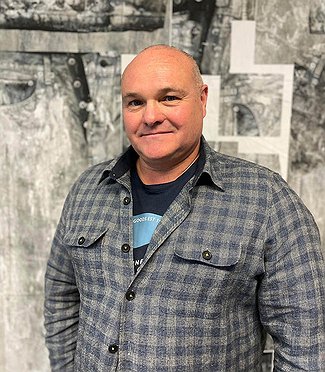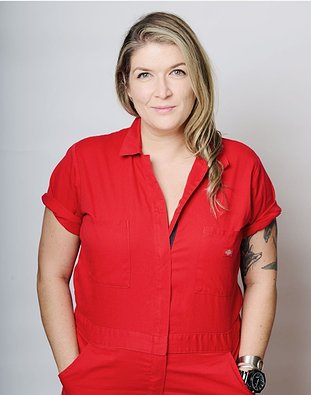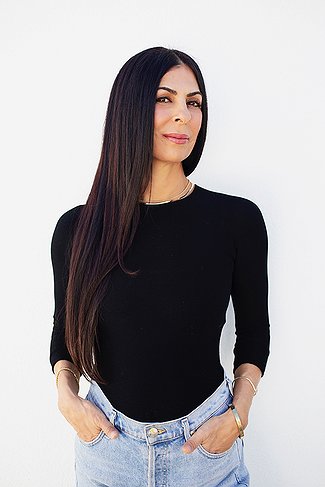INDUSTRY FOCUS: FIBER, YARN AND FABRIC
Earth-friendlier Materials Are at the Heart of Trending Style, Design
There is no denying that eco choices in sourcing have now reached the mainstream. Sustainable pushes toward sourcing fiber, yarn and fabric have led many designers to adopt even small amounts of greener materials as they create their collections, yet many of these fashion creatives are fully embracing the change. They are developing clothing that speaks to both sustainability and style, laying the groundwork for a fashion culture that relies on eco options.
Designers are approaching more-ecological materials with an acceptance of these fibers, yarns and fabrics as the new norm. These options allow designers to create fashion pieces more responsibly, yet also envision new, innovative garment applications that are edgy and trendy.
California Apparel News asked fiber, yarn and fabric experts: What ecological advancements in fiber, yarn and fabric are also trending as the foundation for stylish fashion designs?
Beth Amason
Vice President, Fabric Innovation
Cocona Labs | 37.5 Technologies
We’re at a pivotal moment where we’re seeing a confluence of ecological advancements and fashion from recycled, bio-based and enhanced biodegradable synthetics to plant-based yarns, textile-to-textile recycling and upcycling—all of which can be used without aesthetic limitation. It’s quite an inspiring time for designers to create multipurpose garments that are beautiful and functional while reducing their environmental footprint.
We now include an enhanced biodegradation additive in all our synthetic fibers free of charge to our customers. In 2024, we also launched 37.5 Technology in bamboo viscose for our customers who want a nature-based, biodegradable product. It is an exciting time to work in fashion, giving consumers the opportunity to have a beautiful, sustainable product that provides performance, durability and longevity.
Laura Beachy
Vice President of Global Marketing and Communications
Thermore
Performance and high-fashion consumers are becoming more conscientious with their consumerism. Recycled fibers and sustainable garments are no longer a trendy idea but an absolute mandate from responsible shoppers. Thermore has been a trailblazer in sustainability, launching the first recycled thermal insulation in the early 1980s. Today, our efforts remain firmly rooted in sustainable innovation, with a strong emphasis on using recycled polyester fibers derived from post-consumer PET bottles.
We envision a future where exceptional performance, innovative design and environmental responsibility coexist harmoniously, catering to the increasing demand for eco-friendly solutions in the fashion and sports sectors. We are dedicated to delivering high-performance products that prioritize comfort, durability and versatility, all while keeping environmental sustainability at the core of our mission.
Dr. Jan Beringer
Senior Scientific Expert
Hohenstein
There has been a paradigm shift toward sustainability in our daily lives and across industries. This is also true of the textile and fashion industry. We see more and more sustainable technologies entering this market, which used to be almost exclusive to the sports and outdoor sector.
These sustainable technologies have now permeated most of the textile chain starting from bio-based and biodegradable raw materials and fibers to more resource-efficient dyeing and finishing processes and toward better end-of-life recyclability.
For the raw materials and fibers to become more sustainable, one approach is to use biogenic carbon instead of fossil carbon to lower the carbon footprint and utilize materials that are biodegradable, thereby enabling a closed carbon cycle. These materials are often plant-based or are manufactured through biological processes in bio reactors. This is not only linked to biological materials: Fossil carbon–based materials can also biodegrade. The only drawback here is that they add fossil carbon to the carbon cycle and thus are not carbon neutral.
The use of fewer resources—water, chemicals and energy—in textile production is already achieved in multiple ways. More-efficient dyeing and finishing processes are state of the art. A successful example here is waterless dyeing.
One often forgotten puzzle piece is energy: You need energy to make products. The greener this energy—wind, water or solar power—used for production, the lower the carbon footprint of the product. This is still an area with huge potential for making products more sustainable.
Mark D’Sa
Senior Vice President of Business Development
Panda Biotech
We’ve seen the demand for alternate natural fibers continue to grow. Our hemp fiber is available in several variations, including decorticated, mechanically cottonized and degummed hemp fiber, and it is gaining traction in both mass distribution and niche products. One of our partners, TDMI, has created blends containing 20 percent to 50 percent hemp in canvas, twill and denim. There is increasing pressure to enhance the output of degummed hemp fiber to achieve finer yarn counts for knitted fabrics.
Carmen Danner
Director, Business Development
HeiQ AeoniQ Holding AG
New bio-based materials are here to stay. The yarn of the future must be aesthetically pleasing, have a wide range of applications and be able to be processed by knitters and weavers using existing equipment. It must be commercially available at a marketable price. Two requirements are extremely important: The yarn must be circular—the keyword is circularity in fashion— and it must have a low ecological footprint—the keyword is decarbonization potential. Only when all these criteria have been met can designers and brand managers get involved with the new material in their range and define the right positioning together with the marketing department. In addition to the catalog of requirements mentioned above, we must not forget one thing—new materials of the future allow us to create something new in terms of look and feel and style composition. Next to the ecological aspect and the good story—turn waste into fashion—this is another fact we can be really happy and excited about.
Claudia de Witte
Textiles Sustainability Leader
Eastman
As we drive change in the industry today, we are also focused on the future. Recently we presented Naia Renew fibers to next-generation designers at Bunka Fashion College in Japan and Escola Superior de Disseny in Spain, equipping them with the resources to address the challenges of an evolving industry. By empowering emerging talent to design with sustainability in mind, using new innovations, we aim to inspire a more eco-conscious future for the fashion industry.
To meet the growing demands of designers and consumers, we developed this groundbreaking sustainable cellulosic fiber sourced from 60 percent sustainably sourced wood pulp and 40 percent recycled waste material through GRS-certified mass-balance accounting. Eastman’s patented molecular recycling technologies allows us to focus on being a solutions provider for those waste streams that today do not have a sustainable end-of-life solution and would otherwise end up in landfills.
Jessica Dedora
Product Management, Apparel
Sympatex
Nowadays a stylish fashion piece should be infused with an ecological backstory that has a firm foundation including the use of innovative technology for making sustainable-material choices and fair-working practices—all resulting in a strong value creation from start to end. A way to show this will be by using the novel legislative requirement of implementing the DPP—digital product passport, which will give the opportunity of creating a bond and (hi)story between brand, fashion piece and owner.
This can be reflected in the usage of materials such as recycled polyester from pre- and post-consumer waste, also called Fiber2Fiber, and processes that are oriented around circularity as well as high quality, resulting in a long-lasting, durable material.
Furthermore, it should include the use of transparent and traceable supply chains and clean energy along the entire value chain.
At Sympatex we believe recycled content, specifically Fiber2Fiber, makes a great choice and valuable content to weave into the garments’ features and story.
Andreas Dorner
General Manager
RE&UP
One of the most unwieldy limitations of traditional textile-to-textile recycling systems has always been that they are unable to optimally process blends of different materials, thus precluding the possibility of taking textile recycling to the next level. We have expanded the scope of accessible waste streams through our one-of-a-kind patent-pending proprietary process.
As a feedstock-agnostic solution, our technology can effectively recycle a wide range of blends: cotton, polyester and poly/cotton. This allows us to reuse the majority of collected textile-waste types (pre- and post-consumer), requiring less sorted, less specific material to feed its two parallel recycling processes—one for high cotton content and the other for high polyester content.
An advanced hybrid process enables us to segregate poly/cotton blends into new pure materials for recycling, the go-to alternative to virgin options: Next-Gen Cotton and Next-Gen Polyester that maintain the same performance as virgin fibers, the perfect foundation for stylish fashion designs. Additionally, we are capable of decolorizing cotton fibers after the mechanical recycling process.
Andrea Ferris
Co-founder and Chief Executive Officer
CiCLO
Fibers, yarns and fabric made from textile waste are taking off, which is incredibly exciting! Innovators have been working on textile-waste sorting, recycling and remanufacturing for well over a decade at a small scale. Extended producer-responsibility legislation in Europe and, more recently, California, are now enabling the textile-to-textile infrastructure to be built at scale. We love to see textiles being recycled into new materials to reduce natural-resources depletion. Our CiCLO technology complements these efforts by enabling synthetics like polyester and nylon to remain durable and recyclable, but also biodegradable to reduce the persistence of any microplastics that are shed from them and end up in the environment as pollutants. Trending now and into the future are fashion designs made from recycled materials that can biodegrade and also be recycled into new fibers and fabrics at the end of their useful lives.
Jen Hodo
Brand and Retail Business Development Manager
Birla Cellulose
Designers are increasingly prioritizing materials that seamlessly blend style with ecological responsibility. A key consideration is the garment’s entire life cycle, prompting essential questions: How were these materials produced? How durable is the garment? And what happens at the end of its life—can it biodegrade or be recycled into new textiles?
Cellulosic fibers like viscose, modal and lyocell are gaining traction for being renewable and biodegradable. Technological advancements in textile-to-textile recycling now enable the regeneration of cellulose-rich materials without compromising quality. Our Liva Reviva, made with Circulose, repurposes textile waste into new fibers while our partnership with Circ introduces patented technology to separate and recycle poly/cotton blends—a breakthrough allowing both fibers to be reused in new clothing.
The industry is also shifting from synthetics to natural alternatives with rising interest in mono-fiber fabrics. These single-material textiles simplify recycling and enhance reclamation efforts, making them pivotal to circular design.
Suppliers are turning concepts into creation by delivering practical solutions. Showrooms offer textiles crafted with circularity in mind, giving designers a tactile, hands-on experience with sustainable fabric innovations.
This convergence of ecological progress and material innovation is transforming fashion, proving that responsibility and creativity can thrive together in stylish, forward-thinking design.
Michelle Lea
Chief Marketing and Sustainability Officer
NILIT
Recent advancements in fiber and fabric technologies provide conscious fashion designers with an incredible new range of luxurious, high-quality, ecological performance products. Most exciting is the ability for designers to craft unique combinations of sustainable and technical benefits in fabrics to address the consumer’s ever-growing demands for responsible, high-value clothing. Our SENSIL collection allows designers to begin with premium yarns that are sustainably made with recycled or renewable feedstocks and layer in functionality such as moisture management, stretch, thermal control and freshness to create apparel that is incredibly durable and comfortable but also recyclable or biodegradable when the consumer finally discards it. From fiber to finished product all the way through to end of life, thoughtful designers can fashion cohesive stories that demonstrate remarkable respect for the environment and the people who wear and enjoy their creations.
Through pioneering partnerships, we are investing in emerging technologies and the infrastructure needed to ensure the conscientious manufacture and global availability of these products to accelerate the fashion industry’s shift to a more responsible position.
Marcio Manique
Vice President of Protective Fabrics
Milliken & Company
Sustainability remains top of mind for leaders in the textile industry, and we see the ecological advancements in fiber, yarn and fabric as a direct reflection of that. Our sustainability commitments involve careful selection of fibers and thoughtful implementation of manufacturing processes designed with environmental impact in mind. We focus on the longevity of fabrics so that they perform better over time to reduce waste, and we’ve taken an important step in eliminating PFAS chemistries from our textile products without sacrificing durability.
Philippe Mignot
Project Manager
NextPrinting
From our perspective, textiles are a canvas for expressing creativity and the foundation of our designs. This is why we prioritize environmentally friendly, certified yarns and textiles, including GOTS, GRS and FSC. However, staying up to date is essential as the landscape of fibers, yarns and fabrics is constantly evolving. For instance, among the fabrics currently offered by NextPrinting is a high-performance weave solution that is GRS certified, anti UV, antibacterial, anti-sweat, easy to clean and crease resistant. Leveraging our digital-printing technology, we can achieve an extremely realistic leather effect on this fabric. But our reproduction goes beyond visual impact and appearance. Through surface treatments, we also replicate the tactile feel of leather. This innovative, sustainable approach recreates leather-like properties on various fabric bases while introducing additional benefits. For example, these fabrics are washable, a characteristic often unattainable for real leather, and can be enhanced with water-repellent treatments.
Simon Pereira
Chief Marketing Officer
Celys
Sustainability and innovation must go hand in hand to drive real change in the textile industry. However, true impact comes not just from innovation but from adoption—brands must integrate sustainable materials into their collections and inspire consumers to embrace them.
To bridge this gap, we are dedicated to making our compostable polyester fabrics readily accessible to designers through strategic partnerships, design competitions and collaborations with textile mills.
As a startup and textile innovator, breaking into the closed-loop supply chain of fashion can be challenging. Many established brands and manufacturers have long-standing relationships with traditional fabric suppliers, making it difficult for new, sustainable alternatives to gain traction.
That’s why strategic partnerships are key to our mission. We collaborate closely with our mill partners to create fabric samples and swatches that can be showcased to design houses, brands and independent designers. This approach allows decision-makers to experience our fabrics firsthand—understanding their quality, performance and sustainability benefits.
Alexa Raab
Director of Communications
CovationBio and Sorona
For the athleisure and sportswear segments, advancements in bio-based content from dent corn grown on regenerative farms in the Midwest United States are key to progressing forward in the industry. This innovation has led to the development of Sorona polymer, which relies on 37 percent bio-based content from this source, enabling clothing to last longer and retain stretch through better resistance to heat, UV rays and chlorine.
Katie Tague
Vice President of Denim Marketing and Sales
Artistic Milliners
As the denim industry continues to push sustainability, regenerative agriculture is becoming an exciting focus in the pursuit of more-eco-conscious fibers. Regenerative farming goes beyond simply avoiding harmful practices; it is based on restoring soil health, enhancing biodiversity and combating climate change. At Artistic Milliners, we are proud to be at the forefront, driving the use of organic cotton grown with regenerative techniques. Our commitment to sustainable sourcing is reflected in recent investments that support not only eco-friendly practices but also local communities through responsible farming methods.
By partnering with farmers who use regenerative farming, Artistic Milliners is reducing water consumption, improving soil fertility and providing the capture and storage of carbon-producing top-quality fibers for the supply chain. This investment toward regenerative organic cotton is a testament to our ongoing dedication to sustainability, innovation and drive to lead the industry in creating positive change.
In addition, we always like to congratulate members of the team, like Saqib Sohail, who are dedicated in their roles to push progress. He was honored as one of the Top 100 Vogue Innovators this past year. His no-nonsense approach to sustainability and commitment to advancing environmental solutions in textile manufacturing continue to inspire us all.
Andrea Venier
Managing Director
Officina39
Regarding this topic surrounding fibers, yarns and fabrics, we might consider highlighting the often-overlooked aspects of processing, finishing and dyeing. While the focus tends to be on materials and their origins, managing the entire garment production process and its environmental impact is far from simple.
For instance, a garment made from sustainable fibers might still be dyed with potentially harmful substances or undergo treatments like potassium permanganate, which poses risks to both the environment and human health. Consumers are often left unaware of the full picture, creating a gap between sustainability claims and actual impacts. At a European level, the introduction of a digital product passport could help resolve these communication gaps. This initiative, part of the EU’s sustainable-product policy, aims to create a standardized system that tracks and shares information about a product’s life-cycle, from raw materials to disposal. By offering transparency across the value chain, it would empower consumers to make more-informed and responsible choices. Until such measures are fully implemented, brands must step up efforts to communicate the true life-cycle impacts of clothing. Beyond communication, manufacturers and brands must invest in innovations that prioritize safe, eco-friendly alternatives to traditional finishing and dyeing methods, ensuring a more sustainable future for the industry.
Sherry Wood
Director of Merchandising & Design
Laguna Fabrics
Ecological advancements are significantly shaping the fashion industry by blending sustainability with style. We have invested in advanced yarns that we offer to a diversity of brands. We have a strong presence in regenerated cellulose fibers such as TENCEL Lyocell and TENCEL Modal that are derived from sustainably sourced wood pulp, offering a soft, breathable and biodegradable alternative
Some of our styles are blended with organic cotton. Our plant-based materials such as climate-beneficial cotton, regenerative cotton, organic cotton and hemp are being used for their renewable properties and reduced environmental impact during cultivation. We also have recycled cotton and upcycled blends from post-consumer waste made into durable fabrics. Our fabrics are also blended with biodegradable spandex and compostable fabrics such as wool that degrade completely in soil or compost. These advancements are being incorporated into our fabric collections, which reach all markets.
*Responses have been editedfor clarity and space.








































